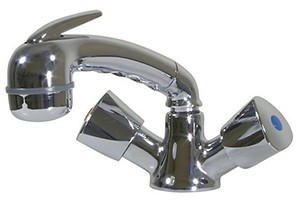Lead that is used in sailboat keels is often a cobbled together witches brew of scrap lead that was available at the time. The mechanical properties of lead alloys vary quite a bit. I have cast alloys of lead from 6 Brinell to over 35 Brinell in hardness. The harder stuff can get pretty brittle if you don't mix in enough tin to add back some ductility. The type of fracture that I see in the picture is somewhere between what I would expect to see from a typesetter's alloy, like Linotype or an alloy that had been poisoned by the addition of a small amount of zinc. Softer alloys of lead (closer to pure lead) would stretch before breaking.
If zinc is in there, you are screwed. In that case, fractures will keep appearing & recasting the whole keel with the same material would not improve the situation. If the lead was just too hard from a high content of antimony, then adding in about 4-6% tin may be enough to give you back some structural integrity. Antimonyal hard leads are common in things like Babbitt bearings, that do occasionally show up at the scrap yards. You do want a little bit of antimony in there to prevent the keel from bending too easily, but too much, can be a bad thing.
That repair could be done by an experienced guy with a couple of steel forming plates, an acetylene torch & a few pounds of good lead alloy. You would need to find the right guy. I don't know anyone out on the sand bar that is up to the task, but if you look around, you might get lucky & find someone. An old school plumber that grew up doing oakum joints might be able to help you.
If it were my boat, I would probably fix the lead. If you can't find a good lead guy, then you might want to go to a local machine shop & have them mill some grooves into the keel. You could then fit stainless flat bar into the milled slots & bolt them through a larger area of the good part of the keel to give you a new attachment point.
As for the cracks in the ACP, I have seen cracks in that direction on the top surfaces of other ACP boats, in areas where no additional stress was added. Those may just be there from the classic problem of the ACP reacting to temperature change. I don't know how the structure is set up inside that hull to support the stress of the chain plate mounts, so I would only be guessing if I gave an opinion of where the stress from those things goes. Perhaps someone else can fill in that blank?
I have had pretty good success with repairing a structural failure on the motor mount of my H170, which is also ACP. So far, my repair is holding up well. The details of my repair are documented in a 2-part write up that can be found here -
https://hunter.sailboatowners.com/mods.php?task=model&mid=11&mn=170





